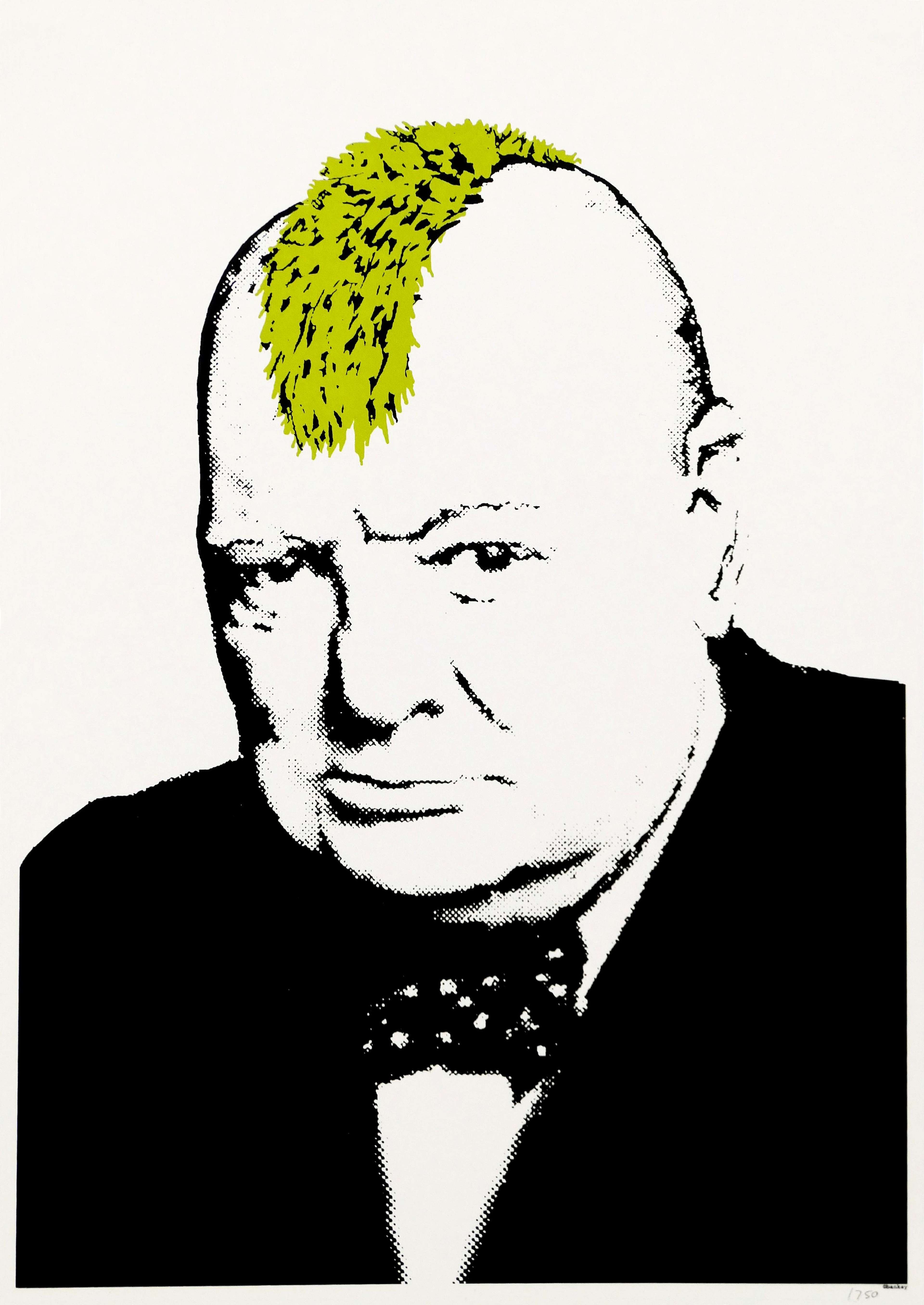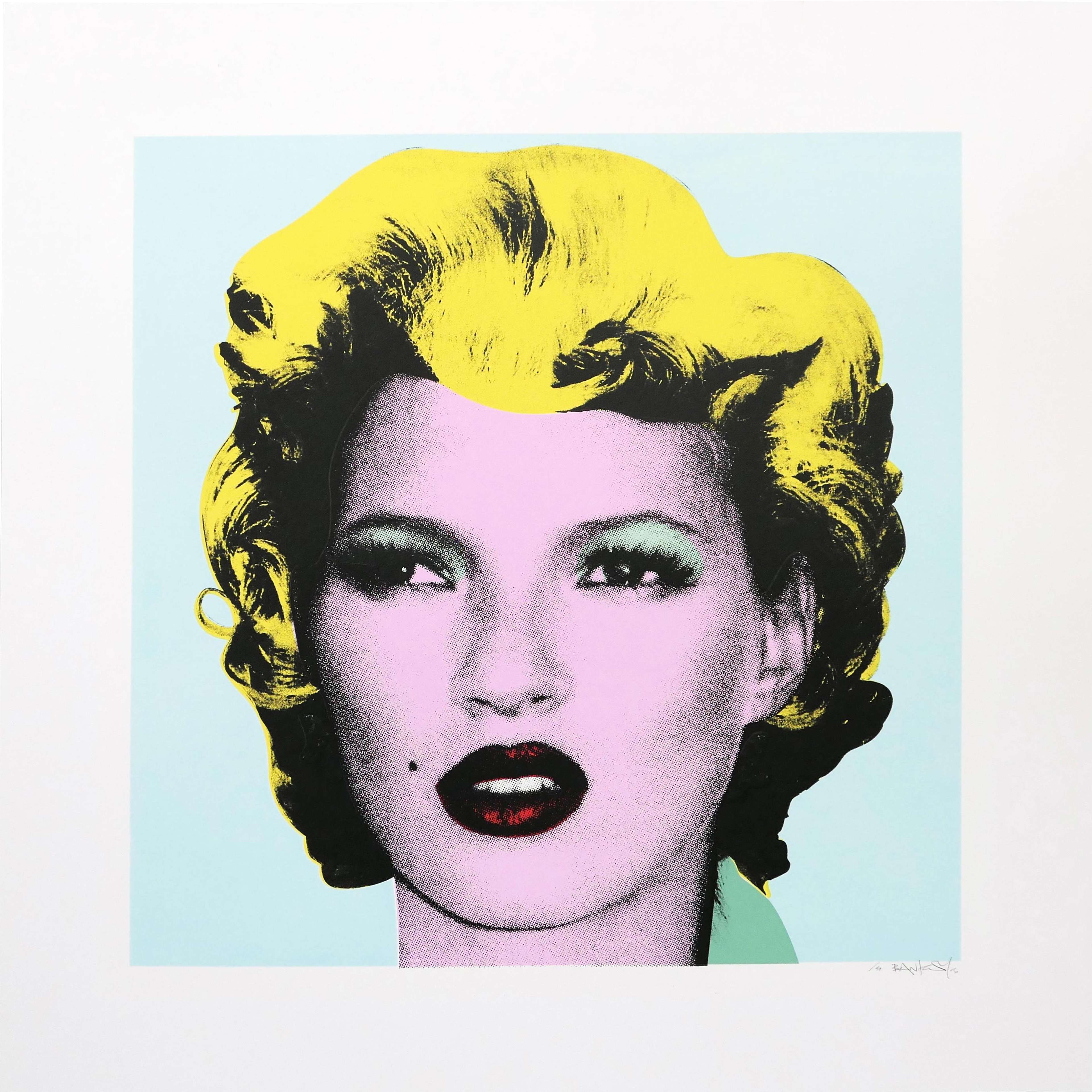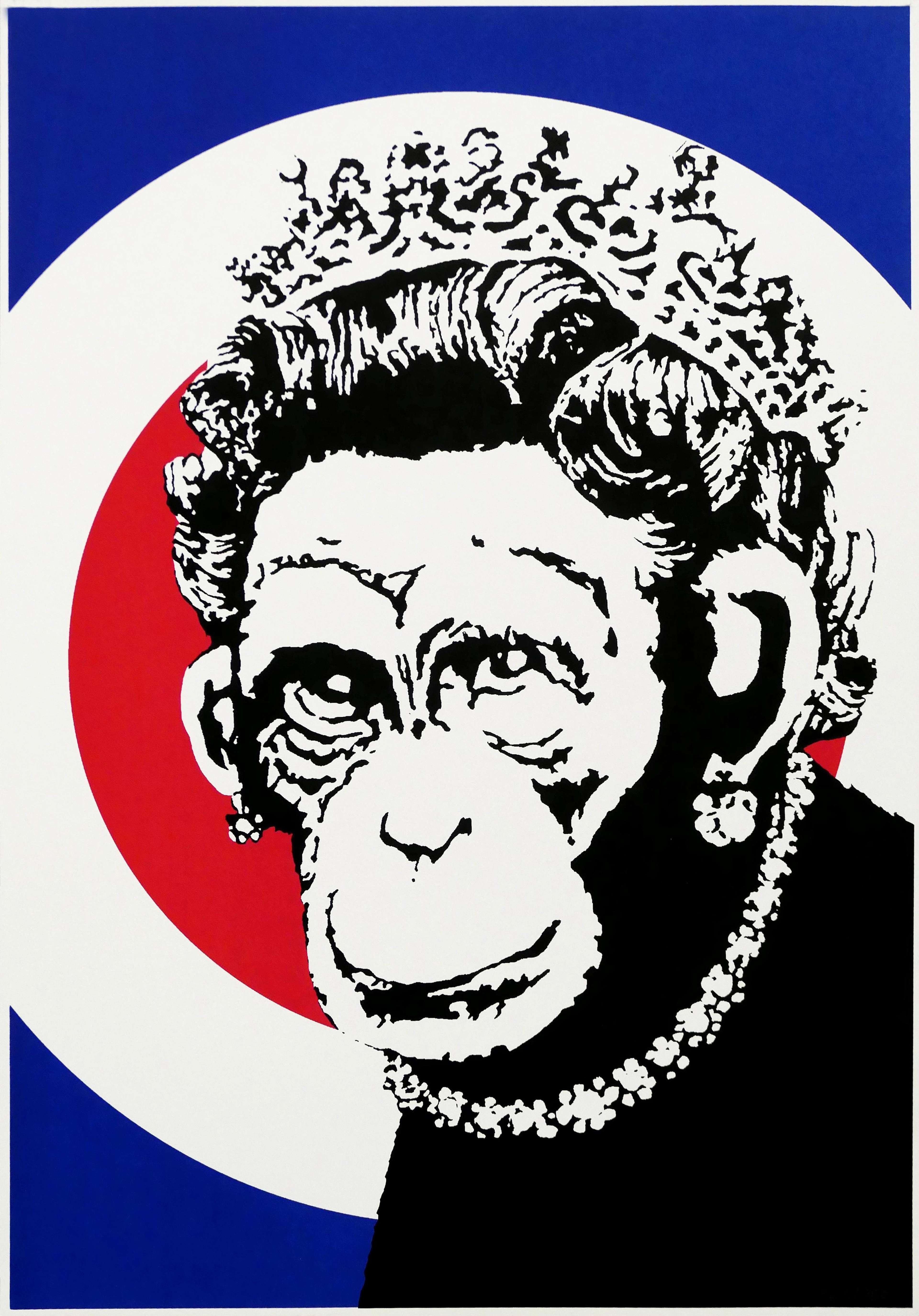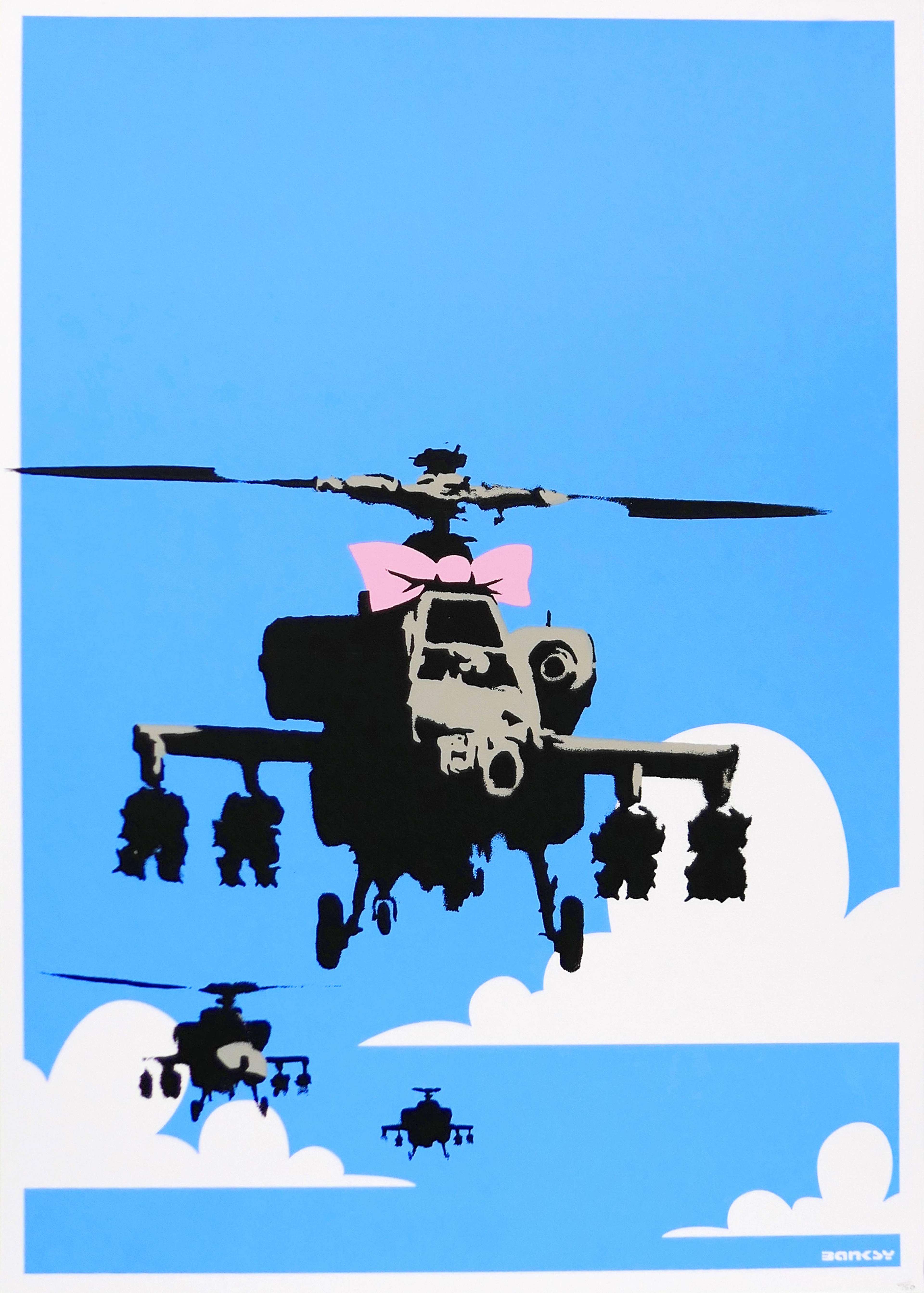 Turf War © Banksy 2003
Turf War © Banksy 2003
Banksy
269 works
A playful but typically subversive portrait of the 'British Bulldog' ex-prime minister Winston Churchill, this Banksy print was first shown at the eponymously titled Turf War exhibition. The exhibition, which was held in a Dalston warehouse in 2003, was seminal as the first major Banksy exhibition (to learn more about Banksy's exhibitions, click here). Alongside Turf War, the exhibition featured live farmyard animals—two sheep, two pigs, and a bull—all painted in various fashions, and causing quite a stir. It is no surprise, given the notoriety of the exhibition by the same name, that the prints of Turf War, released shortly after the exhibition's close, have become a recognisable classic of Banksy's oeuvre.
Turf War is a prime example of Banksy's biting political satire.
 Love Is In The Air (Flower Thrower) © Banksy 2003
Love Is In The Air (Flower Thrower) © Banksy 2003Throughout his career, Banksy has always been committed to poke at the pitfalls in politics. Whether critiquing British historical figureheads, as we see in Turf War, or political dissent overseas, as in Love Is In The Air (Flower Thrower), Banksy has always used his art to champion those facing political oppression.
The Turf War screen prints were released by Pictures On Walls.
 Kate Moss © Banksy 2005
Kate Moss © Banksy 2005Pictures On Walls was established in 2003 to distribute the work of anonymous artists. Banksy's Turf War prints were some of the first to be produced as sold by the collective. Thanks to issues surrounding ownership, however, Pictures On Walls inevitably faced disaster when big brands began using their images illegally.
Banksy's work is an appropriation of Churchill's iconic portrait The Roaring Lion.
 Turf War © Banksy 2003
Turf War © Banksy 2003Shot by Yousuf Karsh on the 30th of December 1941, shortly after Churchill's address to the House of Commons in Ottawa, this iconic portrait became known as The Roaring Lion. The portrait is emblematic of the stoic former Prime Minister, and Banksy's appropriation of it serves to remove some of the grandeur from the portrait.
Turf War was also the name of Banksy's 2003 exhibition in East London.
 Image © Creative Commons / Dalston Banksy (Turf War) © Alan Denney 2003
Image © Creative Commons / Dalston Banksy (Turf War) © Alan Denney 2003Staged in a warehouse in on Kingsland Road, East London, Turf War was Banksy's first major exhibition. The exhibition lasted just three days, but caused a typically-Banksy buzz, with his haphazard curation of installations, graffiti works, and even spray-painted live animals.
Turf War highlight's Banksy's anti-establishment and anti-authority rhetoric.
 Flying Copper © Banksy 2003
Flying Copper © Banksy 2003Protected by his anonymity, Banksy has always used his public-facing artworks to critique systems of power. Like his Flying Copper and Bomb Love, Turf War uses satire and defacement to subvert the image and reputation of Winston Churchill.
The print is based on the real-life vandalism of a Churchill statue.
Turf War is not only an appropriation of the iconic Roaring Lion portrait of Churchill, but also a re-imagining of the defacement of a physical statue of the former Prime Minister. In 2000, Reclaim the Streets held a protest in Parliament Square. One protestor attached a strip of grass onto Churchill's bronze head, and vandalised the entire statue with graffiti. The vandal was sentenced to 30 days in prison for the defacement, so Banksy's Turf War is an immortalisation of this act of political defiance.
Turf War is not Banksy's first punk appropriation of a political leader.
 Lenin On Pallet © Banksy 2002
Lenin On Pallet © Banksy 2002Churchill was not the first statesmen to be represented with a punkish mohawk by Banksy. In the year preceding Turf War, Banksy produced a collection of works depicting the former Soviet Union leader Vladimir Lenin. In this series, Banksy imagined his punk Lenin with spiky hair and pierced ears, a facetious re-imagining of the leader.
Turf War reveals the influence of Pop Art on Banksy's satirical oeuvre.
 Monkey Queen © Banksy 2003
Monkey Queen © Banksy 2003In his choice of medium and subject-matter, Banksy's wry screenprint of Churchill is clearly inspired by Pop Art. His focus on an already iconic portrait of Churchill, disrupted by bold colour, is an approach typically seen in Andy Warhol's work.
Turf War, like Banksy's oeuvre in its entirety, has nonconformity at its core.
 Trolley Hunters (colour) © Banksy 2007
Trolley Hunters (colour) © Banksy 2007With his focus on punk aesthetics and his defacement of Churchill's portrait, Banksy emphasises the nonconformist nature of his art practice. Perhaps it is because of his anonymity that he has been able to create such controversial works as this, without having to face public scrutiny.
The work makes a mockery of war.
 Happy Choppers © Banksy 2003
Happy Choppers © Banksy 2003With the title of this work alone, Banksy highlights his opinion that all wars are fought on the basis of 'turf', or land. Banksy has used a large proportion of oeuvre to critique war and the powerful proponents of it, and Turf War wryly critiques Churchill's misgivings.

